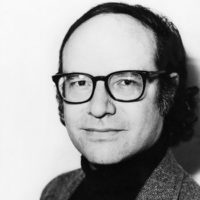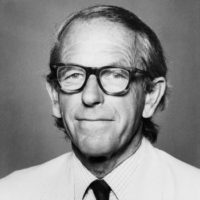
Walter Gilbert
Harvard University

Frederick Sanger
Laboratory of Molecular Biology, Cambridge, England
For the development of new techniques for the rapid sequencing of DNA.
Each of the trillions of DNA molecules in the body is made up of four nucleotides—chemical bases arranged in chains of varying sequences and lengths—which spell out the “letters” of a genetic “message.” It is the sequence of these DNA nucleotides which determines the many chemical processes of life.
Walter Gilbert created a new technique for the rapid sequencing of DNA (deoxyribonucleic acid), the genetic material in the cells of all living things—the chemical blueprint for all life processes.
Dr. Gilbert and Dr. Frederick Sanger have independently developed different methods for the rapid sequencing of DNA. The method developed by Dr. Gilbert employs chemical reagents to break the DNA molecules into fragments, in such a way as to determine their sequence.
As a result of Dr. Gilbert’s technique, the information in several hundreds links in the DNA chain can be “read” at one time, and it is even possible to read DNA information in chains which are tens of thousands of links long. Thus scientists can now quickly arrive at specific knowledge as to the structure of genes. Furthermore, researchers may be able to establish a basic DNA defect that results in a particular genetic disease, and may someday even re-structure the abnormal gene, restore the pattern and eliminate the disease.
Another example of the application of this rapid sequencing is in connection with production of protein hormones. Rapid sequencing may facilitate future applications of recombinant DNA technology which has already been used to produce the human protein hormones: somatostatin; human growth hormone to treat dwarfism; and human insulin to treat diabetes.
Frederick Sanger devised a speeded-up technique for the rapid sequencing of DNA molecules. Dr. Sanger’s technique employs enzymatic reaction in its sequencing.
This new scientific method is enabling scientists to “read” rapidly the genetic information that controls all the chemical life processes, and to elucidate the way the information system in DNA works.
As a result of Dr. Sanger’s work, scientists can now use this procedure to study complex DNA molecules, and especially those portions of the DNA molecule known as genes.
A fragment of DNA which previously required two years to sequence can now be done in about one day. Thus, this technique has greatly accelerated the pace of research in molecular biology laboratories all over the world.
